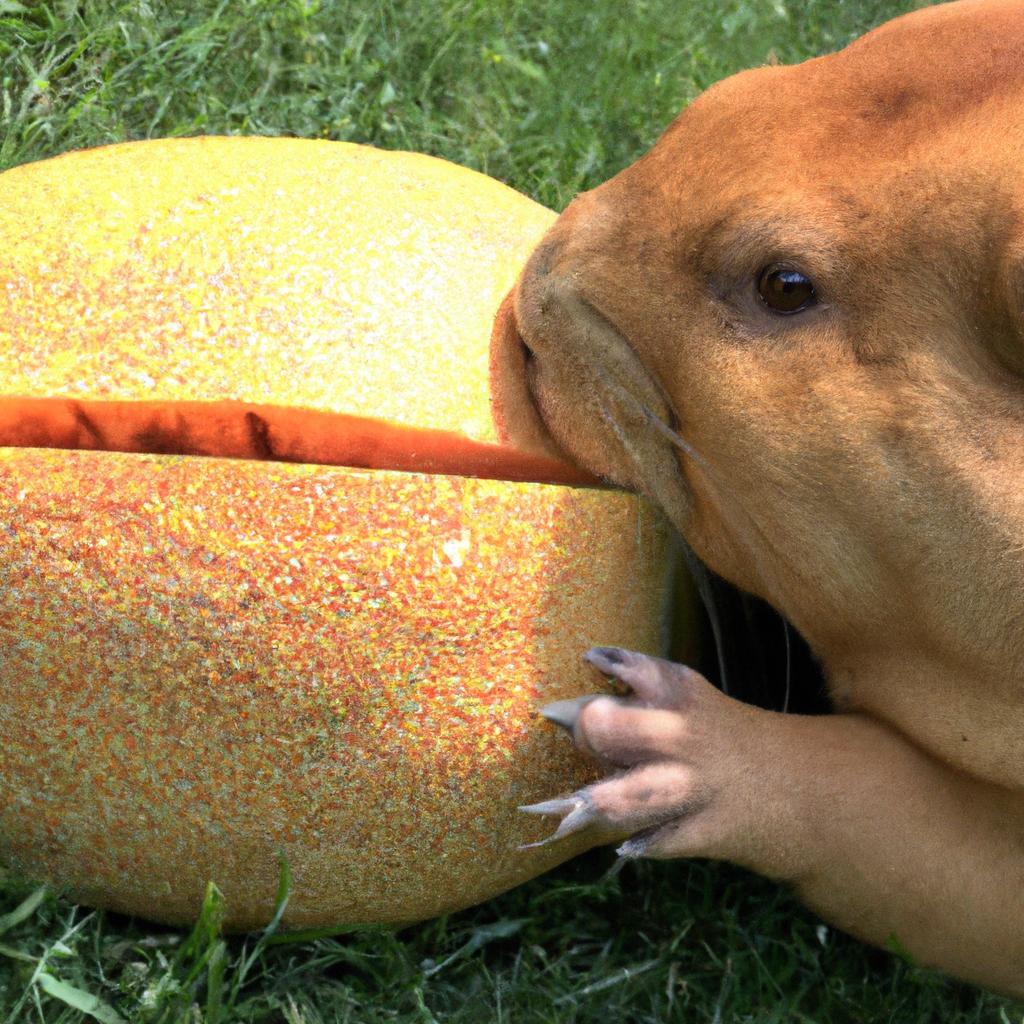As a garden owner, I often wonder what animals might be snacking on my crops. Recently, I found myself asking the question: do groundhogs eat cantaloupe?
Groundhogs, also known as woodchucks, are herbivores and eat a variety of plants, including fruits like cantaloupe. However, the frequency and amount of cantaloupe consumed by a groundhog will depend on several factors.
To get to the point before you leave:
Yes, groundhogs do eat cantaloupe. They are herbivores and enjoy a variety of fruits, vegetables, and plants. If you have a garden with cantaloupe, it’s essential to take preventive measures, such as fencing or repellents, to protect your crops from groundhogs.
But please stay to read a bit more about groundhogs eating habits and how to keep them at bay!
The Cantaloupe and the diet of Groundhogs
First, it’s important to consider the cantaloupe itself. Is it ripe and sweet, or is it still developing?
Groundhogs are more likely to eat ripe, sweet fruits as they are attracted to the sugar content. If the cantaloupe is still green or underripe, the groundhog may be less likely to consume it.

However, if the cantaloupe is ripe and sweet, it may be irresistible to the groundhog.
In general, groundhogs are herbivorous and consume mostly plants, including fruits and vegetables. They are known to raid gardens and farms for their favorite foods, which can cause damage to crops and produce.
Time of Year
Another factor to consider is the time of year. Groundhogs are most active during the spring and summer months when there is an abundance of fresh vegetation available.
If cantaloupe is in season and readily available, a groundhog may be more likely to partake.
Feeding Habits
It’s also important to note that groundhogs are known for their feeding habits. They are creatures of habit and tend to eat at the same time and in the same location each day.
If a groundhog has established a feeding routine that includes cantaloupe, they may continue to eat it regularly.
Implications for Backyard Owners
As a backyard owner, it’s important to be aware of the potential for groundhogs to consume cantaloupe. If you’re growing cantaloupe in your garden, consider using protective measures like fencing or netting to deter groundhogs and other animals from accessing the fruit.
Additionally, if you notice groundhogs in your yard, try to identify their feeding habits and adjust accordingly.
Other Animals That Might Eat Cantaloupe
While groundhogs are known to eat cantaloupe, they’re not the only animals that might be drawn to the sweet fruit. Other animals that may eat cantaloupe include squirrels, raccoons, and deer.
Keep in mind that different animals may be attracted to different stages of ripeness, so it’s important to be vigilant throughout the growing season.
How To Keep Groundhogs Out Of Your Yard!
There are several things that can be done to prevent groundhogs from digging and eating stuff in your backyard. I will list some of the strategies below.
Also, see my recent post if you want a full list of my favorite methods to keep groundhogs and gophers away!
1. Using ultrasonic sound
Groundhogs, like other bigger mammals that may invade your garden, tend to have very good hearing. This means that loud or consistent noises will scare them away or at least shorten their visits.
Check out my full buying guide for these ingenious ultrasonic repeller devices here!
One of my favorite technologies to keep pests away from my backyard is these cool solar-powered ultrasonic sound emitters that you can buy right from Amazon! In my experience, they really work, and the solar panels on top save you the time and money of changing batteries all the time.
They will also work against other rodents like gophers, mice, and rats!
2. Sprinkling natural repellents
Groundhogs may be scared off by using natural scents such as coyote urine or predator scents.
They may also cause them to leave if there is a combination of sounds being played from a radio. The sounds include the sound of barking dogs and coyotes.
You can sprinkle dog hair, cayenne pepper or strong enteric oils and other natural repellents around the garden to keep the groundhogs away.
See my complete list of humane ways to keep groundhogs away from your yard for more tips and tricks!
3. Fencing around the garden
You can also fence around your garden to keep groundhogs from entering the garden. It should be at least 3 feet deep and have a double row of fencing.
Groundhogs are good diggers so it has to go underground or they may find a way into the garden even with the fences in place!
4. Using live traps
You can use a live trap to capture groundhogs and move them to another area. Live trapping is currently the most humane way of groundhog control. Once you have removed all groundhogs from an area, it is important to ensure that they do not come back by using fencing or other barriers to block access.
You can also just buy a live trap, as the sturdy metal ones shown here:
To lure the groundhogs in, you can use one of the numerous favorite foods of groundhogs or an optimized extra attractive formula like this one to make the catch even quicker!
5. Using natural pesticides
There are pesticides or rodent toxins that can be used to kill groundhogs on your property. These may also affect other animals in the area so it is important to ensure that they are only sprayed on the targeted plants.
I do not recommend these, as I prefer more humane ways as described here. Also, anything that kills an animal will also harm humans to some degree, so go for a repellant rather than a toxin if you go the chemical route!
6. Using Scarecrows
You can use a scarecrow in your garden to keep groundhogs away. Groundhogs are afraid of novelty so time-sensitive or motion-activated scarecrows may also be effective in keeping them out of the garden.
7. Using Lights
Groundhogs are not strictly nocturnal animals but they are most active at low light so they do avoid areas with bright lights.
Motion-activated lights, sounds, and sprinklers may help prevent groundhogs from entering your yard.
Any blinking light will confuse and scare away groundhogs from your yard, especially if they are motion activated and sudden!
8. Motion-activated sprinklers
Like most animals, groundhogs hate surprises, and they will run away if suddenly sprayed with water. I like this solution because it is humane, simple, effective, and does not require much time to set up.
The Havahart 5277 is a motion-activated sprinkler that is activated by the movement of animals up to 25 feet away and sprays them with a harmless water jet, frightening them off and keeping them at bay.
The included metal stake makes it easy to install in your garden, and the sprinkler can be rotated 180 degrees for maximum coverage.
In conclusion, the answer to whether groundhogs eat cantaloupe is nuanced.
While they are known to consume the fruit, the frequency and amount will depend on several factors like the ripeness of the cantaloupe and the feeding habits of the groundhog.
As a backyard owner, it’s important to be aware of the potential for groundhogs and other animals to eat cantaloupe and take appropriate measures to protect your crops.















